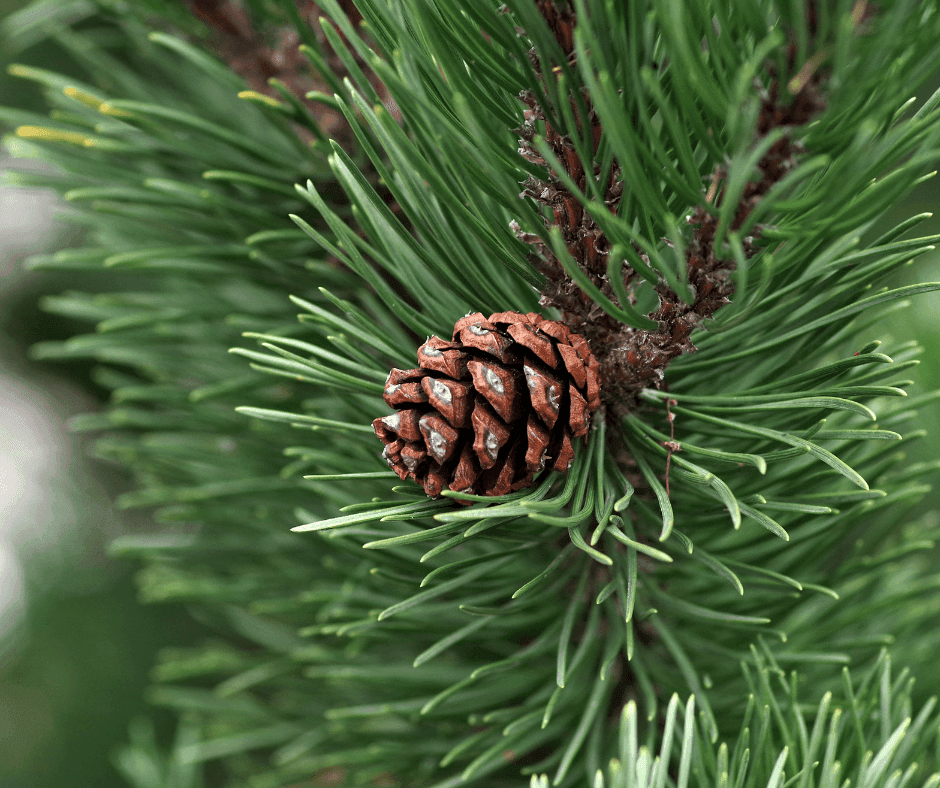Pine trees are a staple of many landscapes and forests throughout the world, known for their distinctive needle-like leaves, resinous bark, and iconic cone-shaped profile. Whether you're a nature enthusiast, a hiker, or a homeowner looking to identify the trees on your property, learning how to identify pine trees can be a rewarding and useful skill.
With over 120 different species of pine trees worldwide, each with its own unique characteristics and habits, identifying them can be a challenging but fulfilling endeavor. In this guide, we'll explore some of the key features of common pine trees and provide tips and tricks for identifying them in the wild.
The last paragraph under each species is also important because it classifies all related species and distinguishes those that are liable to be confused with the particular tree under consideration.
THE PINES
How to tell them from other trees: The pines belong to the coniferous class of trees; that is, trees which bear cones. The pines may be told from the other coniferous trees by their leaves, which are in the form of needles two inches or more in length. These needles keep green throughout the entire year.
This is characteristic of all coniferous trees, except the larch and cypress, which shed their leaves in winter.
The pines are widely distributed throughout the Northern Hemisphere, and include about 80 distinct species with over 600 varieties. The species enumerated here are especially common in the eastern part of the United states, growing either native in the forest or under cultivation in the parks. The pines form a very important class of timber trees, and produce beautiful effects when planted in groups in the parks.
Which Type of Pine?
How to tell them from each other: The pine needles are arranged in clusters. Each species has a certain characteristic number of needles to the cluster and this fact generally provides the simplest and most direct way of distinguishing the different pines.
In the white pine there are five needles to each cluster, in the pitch pine three, and in the Scotch pine two. The Austrian pine also has two needles to the cluster, but the difference in size and character of the needles will distinguish this species from the Scotch pine.
WHITE PINE ( Pinus strobus)
Distinguishing characters: The tree can be told at close range by the number of needles to each cluster. There are five needles to each cluster of the white pine. They are bluish green, slender, and about four inches in length.
At a distance the tree may be told by the right angles which the branches form with the main trunk. No other pine shows this character.
Form and size: A tall tree, the stateliest of the evergreens.
Range: Eastern North America.
Soil and location: Prefers a deep, sandy soil, but will grow in almost any soil.
Enemies: Sucking insects forming white downy patches on the bark and twigs, the white pine weevil, a boring insect, and the white pine blister rust, a fungus, are among its principal enemies.
Value for planting: Aside from its value as an ornamental tree, the white pine is an excellent tree to plant on abandoned farms and for woodlands and windbreaks throughout the New England States, New York, Pennsylvania, and the Lake States.
Commercial value: The wood is easily worked, light, durable, and will not warp. It is used for naval construction, lumber, shingles, laths, interior finish, wooden ware, etc.
Other characters: The fruit is a cone, four to six inches long.
Comparisons: The tree is apt to be confused with the Bhotan pine ( Pinus excelsa), which is commonly grown as an ornamental tree. The Bhotan pine, however, has needles much longer and more drooping in appearance.
PITCH PINE ( Pinus rigida)
Distinguishing characters: Here there are three needles to each cluster,
They are dark, yellowish-green needles about four inches long. The rough-looking branches of the tree may be seen studded with cones throughout the year, and clusters of leaves may be seen sprouting directly from the trunk of the tree. The last two are very characteristic and will distinguish the tree at a glance.
Form and size: It is a low tree of uncertain habit and extremely rough looking at every stage of its life. It is constantly full of dead branches and old cones which persist on the tree throughout the year.
Range: Eastern United States.
Soil and location: Grows in the poorest and sandiest soils where few other trees will grow. In New Jersey and on Long Island where it is native, it proves so hardy and persistent that it often forms pure stands excluding other trees.
Enemies: None of importance.
Value for planting: Well adapted for the sea coast and other exposed places. It is of extremely uncertain habit and is subject to the loss of the lower limbs. It frequently presents a certain picturesqueness of outline, but it could not be used as a specimen tree on the lawn.
Commercial value: The wood is coarse grained and is used for rough
lumber, fuel, and charcoal.
Other characters: The fruit is a cone one to three inches long, persistent on the tree for several years.
THE SCOTCH PINE ( Pinus sylvestris)
Distinguishing characters: There are two needles to each cluster, and these are short compared with those of the white pine, and slightly twisted.
The bark, especially along the upper portion of the trunk, is reddish in color.
Form and size: A medium-sized tree with a short crown.
Range: Europe, Asia, and eastern United States.
Soil and location: Will do best on a deep, rich, sandy soil, but will also grow on a dry, porous soil.
Enemies: In Europe the Scotch pine has several insect enemies, but in America it appears to be free from injury.
Value for planting: Suitable for windbreaks and woodland planting. Many excellent specimens may also be found in our parks.
Commercial value: In the United States, the wood is chiefly used for fuel, though slightly used for barrels, boxes, and carpentry. In Europe, the Scotch pine is an important timber tree.
Comparisons: The Scotch pine is apt to be confused with the Austrian pine ( Pinus austriaca), because they both have two needles to each cluster. The needles of the Austrian pine, however, are much longer, coarser, straighter, and darker than those of the Scotch pine. The form of the Austrian pine, too, is more symmetrical and compact.
Red Pine
The red pine ( Pinus resinosa) is another tree that has two needles to each cluster, but these are much longer than those of the Scotch pine (five to six inches) and are straighter. The bark, which is reddish in color, also differentiates the red pine from the Austrian pine.
The position of the cones on the red pine, which point outward and downward at maturity, will also help to distinguish this tree from the Scotch and the Austrian varieties.


